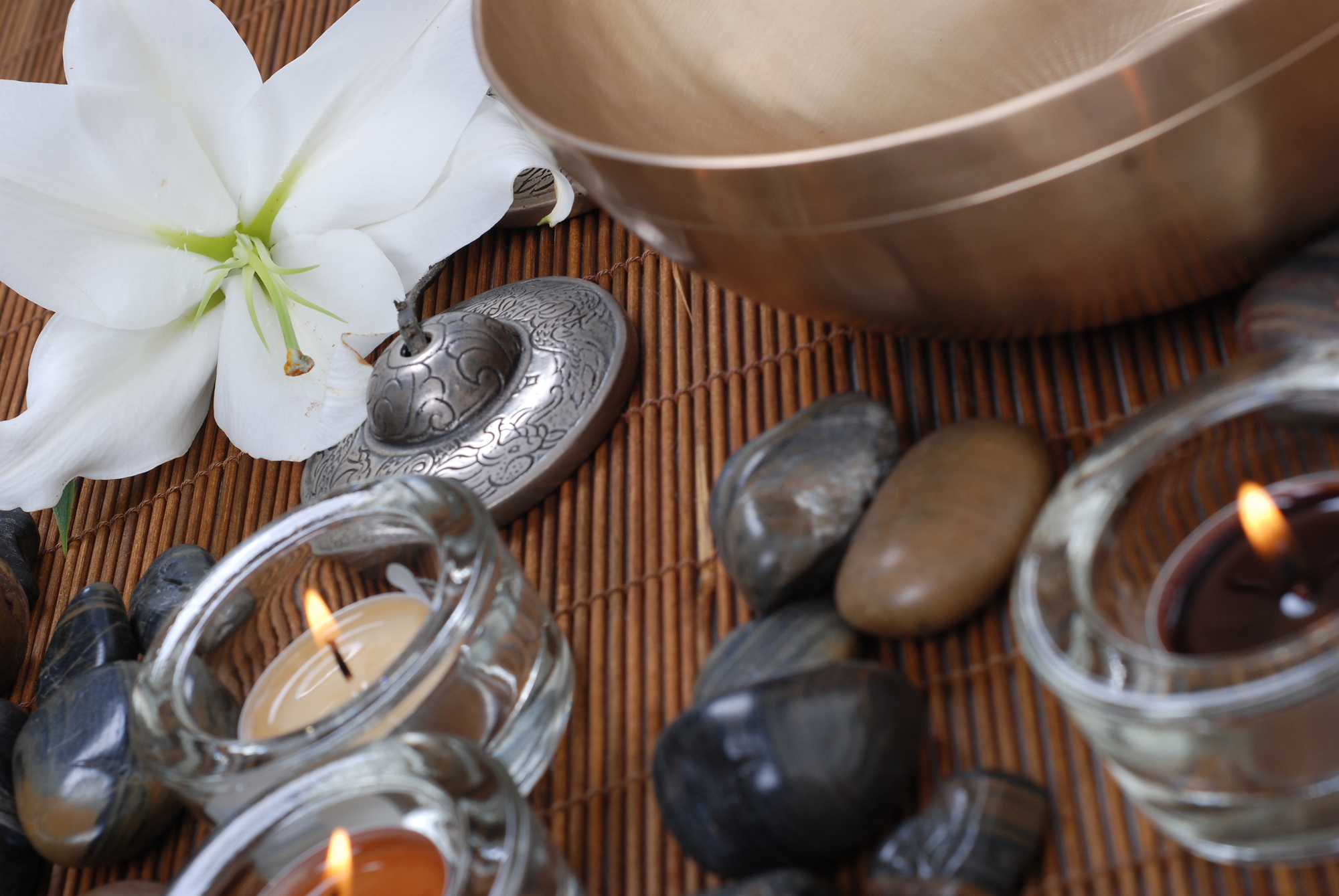A Mantra is a Sanskrit word for “sound tool”. Along with only a few other ancient languages, Sanskrit evolved as a complex system of onomatopoeia – where the sounds evoke movements of energy. The sounds themselves create actual interactions or events, while resonating in different parts of the body and mind, like ‘Mantra Meditation’.
OM (AUM), SO HUM and SA TA NA MA are well studied mantras used for healing bodily tissues, lowering blood pressure, reducing bad habits and staving off Alzheimer’s. In fact the Alzheimer Society uses Kirtan Kriya (SA TA NA MA) as an effective Kundalini Yoga meditation for brain and memory vitality.
Words like screeeeech, craaaaash and purrrrr are examples of English words that resonate both sound of meaning. Cats will even vibrate their “purr” at certain frequencies to heal themselves from ailments. Many animals (just like us humans) can be highly sensitive and greatly affected by the influx of sensory stimuli all around us.
Those wi-fi waves can mess with our natural and relaxed states. They are invisible and subtle but very, very powerful! Laying a foundation for the conscious construct of good vibes is where all the magic in relationships and family dynamics begin.
Mantra Meditation
Mantras are information, and in the Sanskrit language, it’s like an information sequencing system that mimics the process of nature’s repeating patterns. As the Sanskrit scholar, Dr. Douglas Brooks has said, “Sanskrit tells us what Nature shows us. The way Nature goes about doing its thing, Sanskrit goes about its language.” Much like the way that music “moves” us and can bring us into different feeling and being states, Mantra uses sound to evoke movement of physical and emotional energy. Stimulating the nervous system which then informs our experiences. Click here to read, “Nervous System – What Conventional Medicine Doesn’t Want You To Know” for more information about your nervous system.
What Does All This MEAN?
It means that Mantras can positively or negatively “charge” and affect our feelings, emotions, and thought patterns, as well as the people and environments that surround us. There are Mantras for anger, stress, grief, fighting, love, healing, addiction, insomnia, anxiety, asthma, joy…the list goes on and on! Attune sound currents like a finely crafted symphony of sound and energy!
By repeating UPLIFTING & HEALING sound currents or “Mantras”, over and again, you’re intentionally attuning your mood and energy into a desired state with a specific sound current. It’s like tuning an instrument to refine and manipulate its sound. We can REDIRECT all our energy beyond the anger, fear and frustration (this is an act of self-love). We know that our children absorb and pick up on the subtleties and nuances of our tones and expressions. Even if it’s subconscious, it’s vibe passes through the nervous system.
We can feel wildly emotional when triggered and it feels good to release the ROAR! In fact it feels “so good” and “so necessary” in the moment that we can hardly feel it flowing out the floodgates! In the aftermath of heavy energy and hurt feelings, the guilt ensues. That is unless we chime a new Mantra that is intentional and fueled by love. In between the frustration and the ROAR is a beautiful, neutral, silent space. If we can tap into that very small windowed space in time, we can change our reactive, ha-BITCH-ual rants, into Mantras that serve to transform, the current feel and mood and allow us to better RESPOND, Not REACT. This will reverberate a ripple effect of positive vibes through the home, and the hearts & souls of your loves.
How To Use Mantra Meditation
A good place to start is by first recognizing your OWN Mantras. Ask your kids and they’ll tell you straight up. Just don’t take it personal because it’s not! You can get the kids to talk about theirs too. Once you catch on to your daily drone, you will have cultivated an awareness to continuously recognize it and switch on the GOOD VIBES. You will notice your kids really digging your new energy and try to match it. This is a fun way to watch an energy exchange in action.
Mimic exactly the vibe you want back from them and see what you get. If you like the power packed punch of “swear” words, try shouting SAT NAM instead! This means “true self” and it’s pronounced like, “but mom” (go figure) and will have you tapping into deeper states of joy, love, and gratitude in no time. You can also use any words or sounds that FEEL uplifting and happy. Come up with clever CODES to establish personal boundaries and other family agreements.
You can also use mantra or music in the background for hours on repeat. Infuse your home with classical music, nature sounds, or other good vibe beats, that uplift your soul and give calm to your space. FEEL out the new vibrations, give it some time and then see what you notice. The ripple effect is real. When WE do the work to EMPOWER ourselves, we EMPOWER our children. What we put out is what we’ll attract. Click here to learn How to Create Your Own Personal Mantra.
Got that Mantra ready? Now get out there and start flexing your victorious vibes!
Sat Nam xo
Visit Melanie’s Instagram for related stories on Mantras, Mamas & Mindful Living
IG – urbanrootsyoga
[email protected]
www.urbanrootsyoga.net
Conscious Lifestyle Design
About The Author:
Melanie Woolsey is an established Yoga Therapist, KundaliniYogini, and Ayurveda Practitioner with over 10 years of experience journeying through study, self discovery, healing and teaching. She is also a mama to one little guru who has been her greatest teacher yet.



